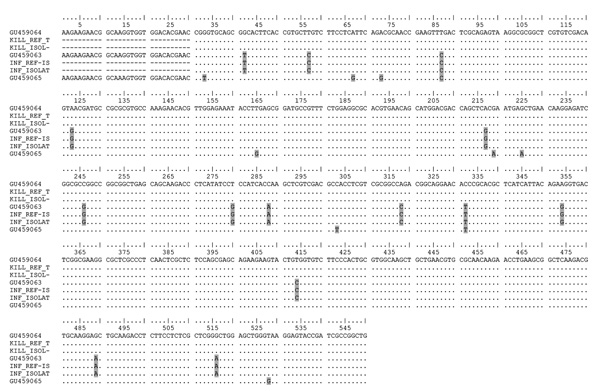Volume 20, Number 3—March 2014
Letter
Cutaneous Leishmaniasis Caused by Leishmania killicki, Algeria
Figure

Figure. . Alignment of topoisomerase II nucleotide sequences of Leishmania killicki, L. infantum, and L. major. Point mutations discriminating Leishmania species are outlined on a gray background. The references strains are GU459063: L. infantum MHOM/FR/78/LEM75; GU459064: L. killicki MHOM/TN/80/LEM163; GU459065: L. major MHOM/MA/81/LEM265 ; KILL_REF_T: L. killicki and INF_REF-IS: L. infantum, strains genotyped by the Leishmania National Reference Center, Montpellier, France. The isolates are: KILL_ISOL-: L. killicki (n = 2); INF_ISOLAT: L. infantum (n = 36).
Page created: February 20, 2014
Page updated: February 20, 2014
Page reviewed: February 20, 2014
The conclusions, findings, and opinions expressed by authors contributing to this journal do not necessarily reflect the official position of the U.S. Department of Health and Human Services, the Public Health Service, the Centers for Disease Control and Prevention, or the authors' affiliated institutions. Use of trade names is for identification only and does not imply endorsement by any of the groups named above.